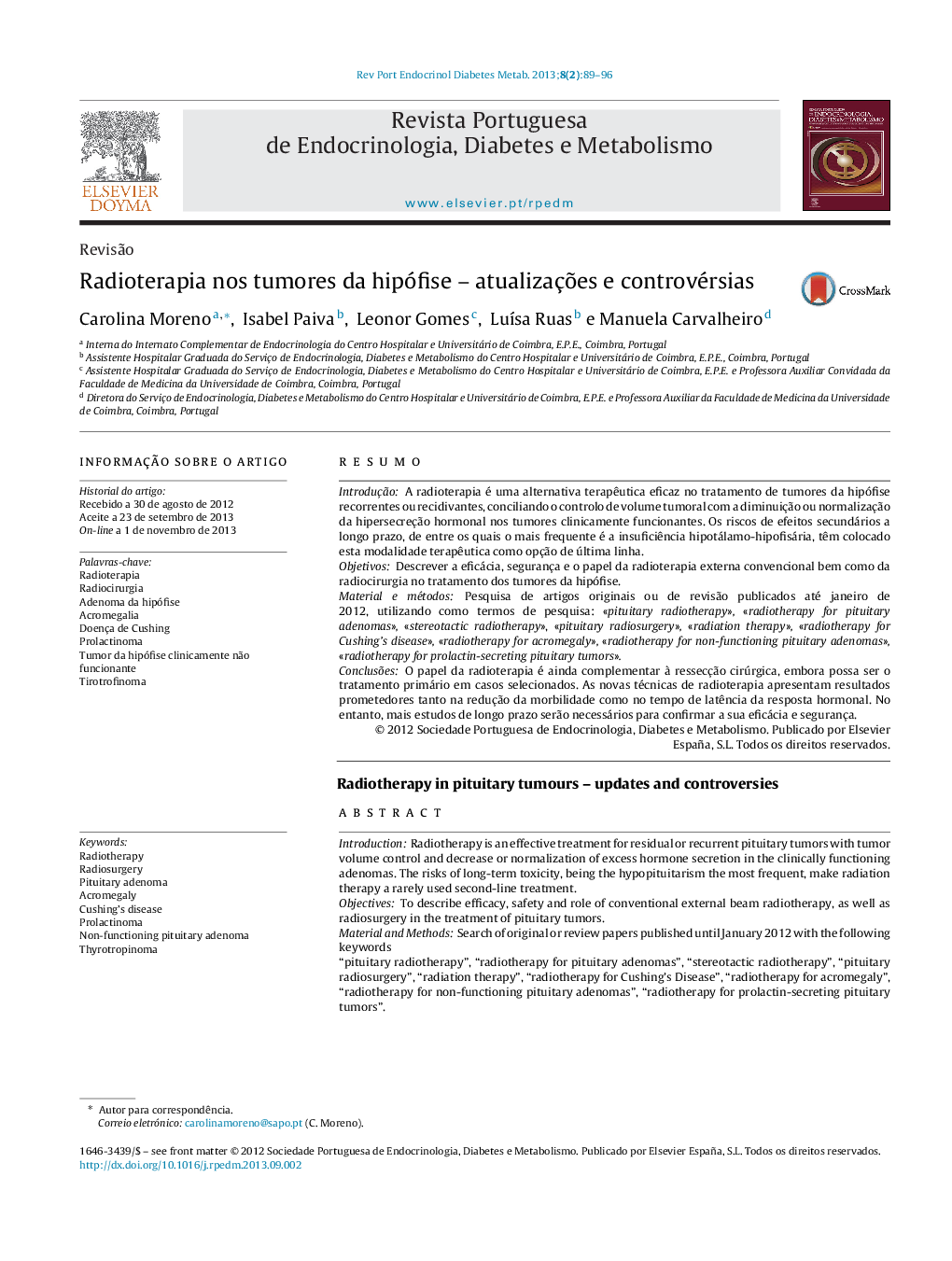| Article ID | Journal | Published Year | Pages | File Type |
|---|---|---|---|---|
| 3278478 | Revista Portuguesa de Endocrinologia, Diabetes e Metabolismo | 2013 | 8 Pages |
ResumoIntroduçãoA radioterapia é uma alternativa terapêutica eficaz no tratamento de tumores da hipófise recorrentes ou recidivantes, conciliando o controlo de volume tumoral com a diminuição ou normalização da hipersecreção hormonal nos tumores clinicamente funcionantes. Os riscos de efeitos secundários a longo prazo, de entre os quais o mais frequente é a insuficiência hipotálamo-hipofisária, têm colocado esta modalidade terapêutica como opção de última linha.ObjetivosDescrever a eficácia, segurança e o papel da radioterapia externa convencional bem como da radiocirurgia no tratamento dos tumores da hipófise.Material e métodosPesquisa de artigos originais ou de revisão publicados até janeiro de 2012, utilizando como termos de pesquisa: «pituitary radiotherapy», «radiotherapy for pituitary adenomas», «stereotactic radiotherapy», «pituitary radiosurgery», «radiation therapy», «radiotherapy for Cushing's disease», «radiotherapy for acromegaly», «radiotherapy for non-functioning pituitary adenomas», «radiotherapy for prolactin-secreting pituitary tumors».ConclusõesO papel da radioterapia é ainda complementar à ressecção cirúrgica, embora possa ser o tratamento primário em casos selecionados. As novas técnicas de radioterapia apresentam resultados prometedores tanto na redução da morbilidade como no tempo de latência da resposta hormonal. No entanto, mais estudos de longo prazo serão necessários para confirmar a sua eficácia e segurança.
IntroductionRadiotherapy is an effective treatment for residual or recurrent pituitary tumors with tumor volume control and decrease or normalization of excess hormone secretion in the clinically functioning adenomas. The risks of long-term toxicity, being the hypopituitarism the most frequent, make radiation therapy a rarely used second-line treatment.ObjectivesTo describe efficacy, safety and role of conventional external beam radiotherapy, as well as radiosurgery in the treatment of pituitary tumors.Material and MethodsSearch of original or review papers published until January 2012 with the following keywords“pituitary radiotherapy”, “radiotherapy for pituitary adenomas”, “stereotactic radiotherapy”, “pituitary radiosurgery”, “radiation therapy”, “radiotherapy for Cushing's Disease”, “radiotherapy for acromegaly”, “radiotherapy for non-functioning pituitary adenomas”, “radiotherapy for prolactin-secreting pituitary tumors”.ConclusionsRadiotherapy still has a complementary role to surgical resection, although it could be appropriate as a first-line treatment in selected cases. The new modalities of radiation treatment show promising results in the reduction of toxicity as well as in the latency of hormonal response; however more studies are necessary to prove long-term efficacy and safety.
